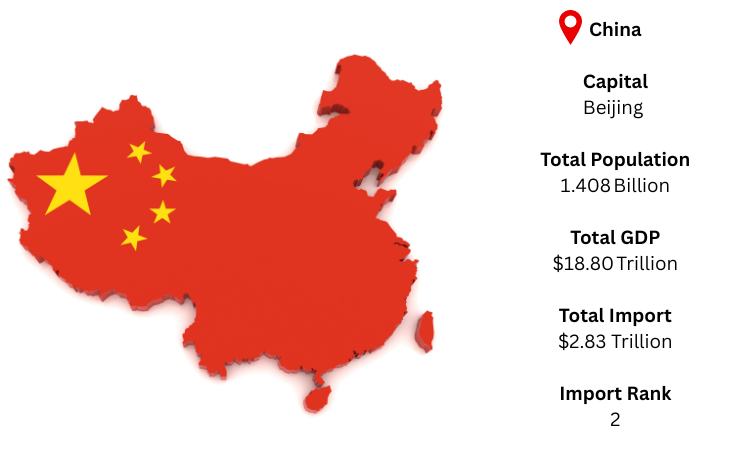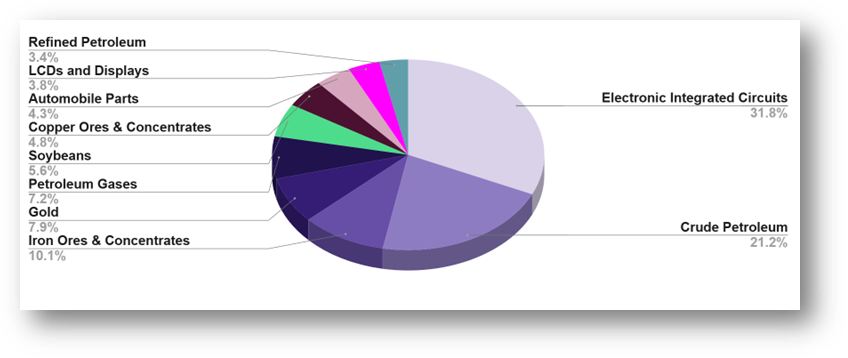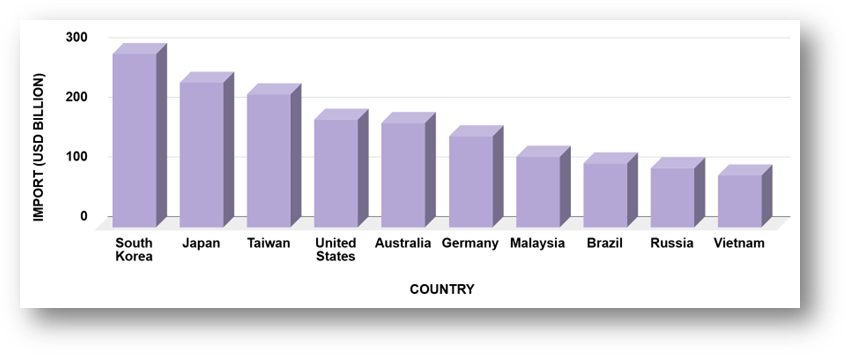China is the most populous and second-largest economy in the world, and it is located in East Asia. Beijing serves as its capital. China is one of the world's biggest importers thanks to its extensive industrial base, export-driven manufacturing sectors, and expanding middle class. Based on China import data, China was the world's second-largest importer in 2024, with imports totaling USD 2.83 trillion.
As per China shipments data, the nation imports a variety of products, including integrated circuits, crude oil, semiconductors, and iron ore. The United States, Australia, Japan, and South Korea are among the top trading partners. It has a GDP of $18.80 trillion and a population of 1.408 billion.



